A gray afternoon in winter is not usually considered the best time to visit a garden, but it’s perfect for my first glimpse of this extraordinary place. A battered sign reads: “Positively No Admittance!” Paul Orpello, my guide, opens a creaky gate and leads me into a landscape of ruins, which was largely abandoned for more than 50 years and is now being brought back to life. I realize that “garden” isn’t the right word for it. It feels more like a magical lost city that was bombed in a war.
Orpello guides me past murky former swimming pools that now hold snakes and sludge. We sidestep sinkholes and rubble piles. We pass a terrace of cracked columns and crumbling brick walls with hidden recesses like tiny witches’ caves. It feels like traversing the fire swamp in The Princess Bride, risking quicksand and Rodents of Unusual Size. Despite being buried under weeds for decades, a swan mosaic is almost perfectly intact. This may be the strangest garden in America, at once the darkest and most joyous, unlike any other place I’ve been. Orpello tells me that what he’s experienced in this garden changed his life.
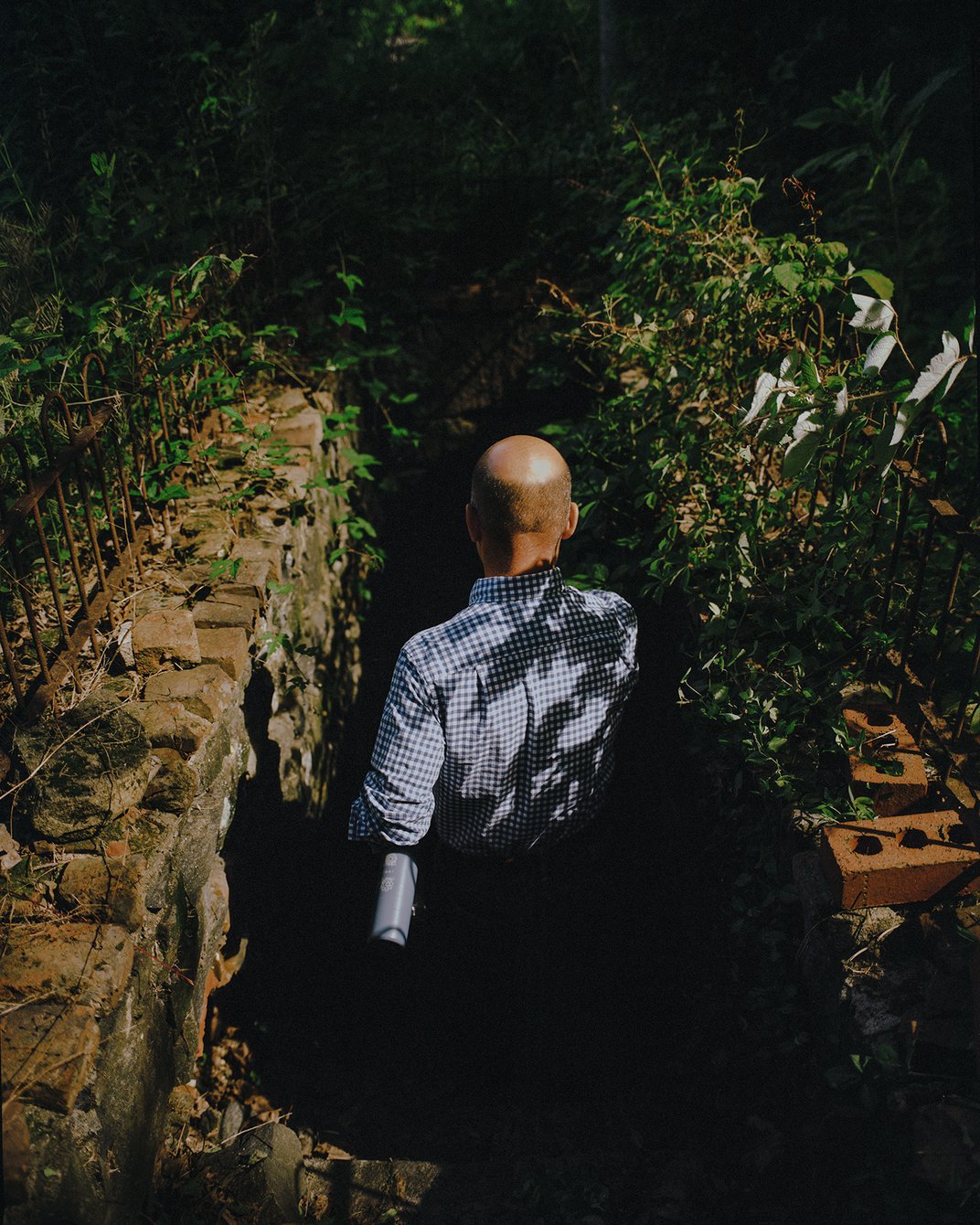
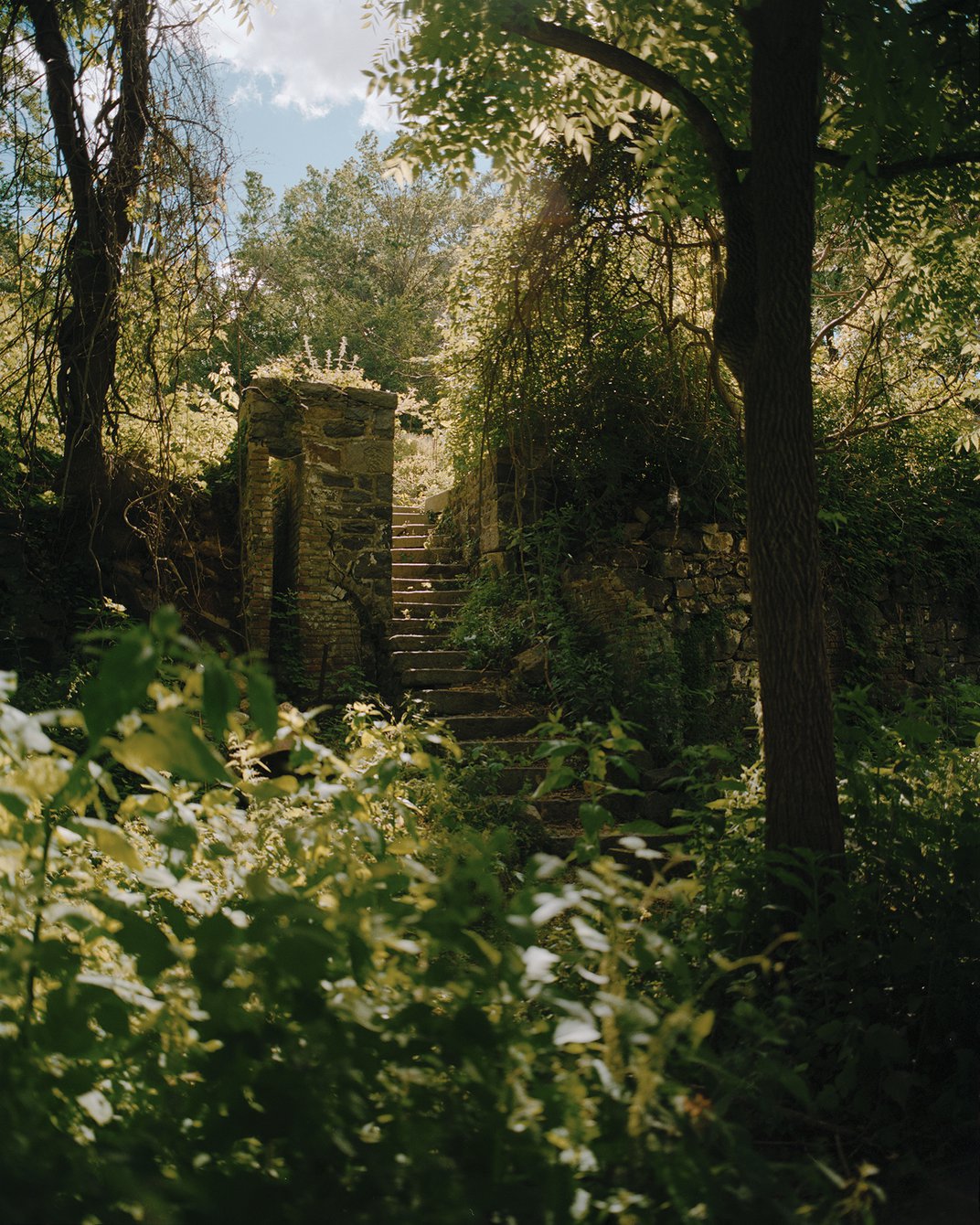
Walking these paths evokes even more powerful feelings after one learns the landscape’s poignant history. For over a century, the du Pont family operated a black powder mill here in Wilmington, Delaware, where more than 300 workers combined saltpeter, charcoal and sulfur to create the explosive powder used in mining and construction—and munitions during wartime. It was dangerous work, and during the years the mills operated, from 1802 to 1921, there were 288 accidental blasts, which killed 228 people, mainly workers. The most powerful came on a foggy afternoon in October 1890, when over 100,000 pounds of black powder detonated, collapsing seven buildings. The shocks were felt as far away as Philadelphia. Twelve people died.
The du Pont family also lived right on the site, practically on top of the refinery, in a house called Eleutherian Mills. Louise du Pont, 13 years old in 1890, lived at another family home, Winterthur, two miles away. The explosion broke most of the windows in the Winterthur house and surely terrified her. She would grow up to transform the terrain around Eleutherian Mills into the marvel we see today.
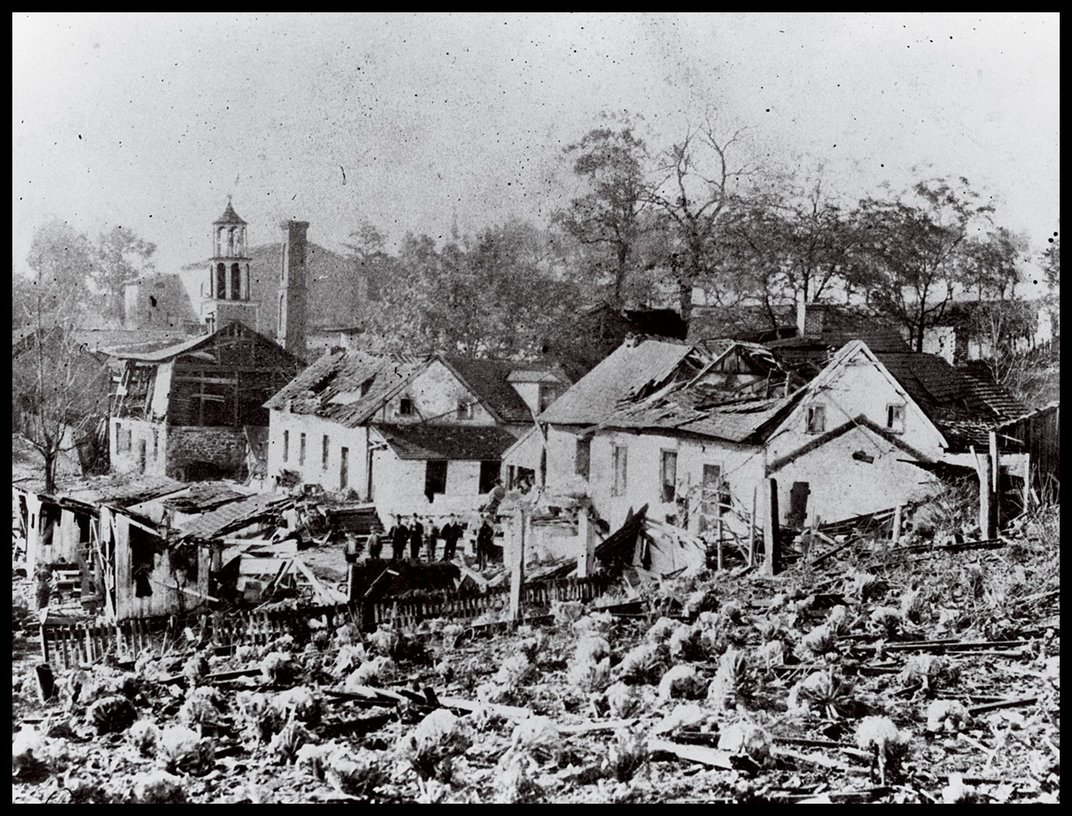
The 1890 blast damaged Eleutherian Mills so severely that the du Pont family moved out. After another explosion further wrecked the site in 1920, the company moved its powder operations, establishing sites in New Jersey and elsewhere. Louise’s father purchased the home and mill property from the company and gave it to her, and she took possession of the estate in 1923. Here, Louise and her husband, Francis B. “Frank” Crowninshield, built the only garden in the world that includes fanciful Italianate structures amid industrial refinery ruins, all in a place where so many people died. As the Crowninshields built their garden, the mill’s tunnels morphed into lush hidden grottoes, foundations became pools, and arches rose from the powder yard’s wreckage. Frank lashed the new structures with chains and hammers to make them look more authentically ruined. Throughout the property, Louise planted thousands of flowers, shrubs and trees. Industrial saltpeter cauldrons were hoisted on pedestals like ornaments. During nighttime parties, Orpello says, Louise had these cauldrons filled with oil and lit on fire. One can imagine the flames dancing on the ruins, transporting revelers to a dark, magical world.
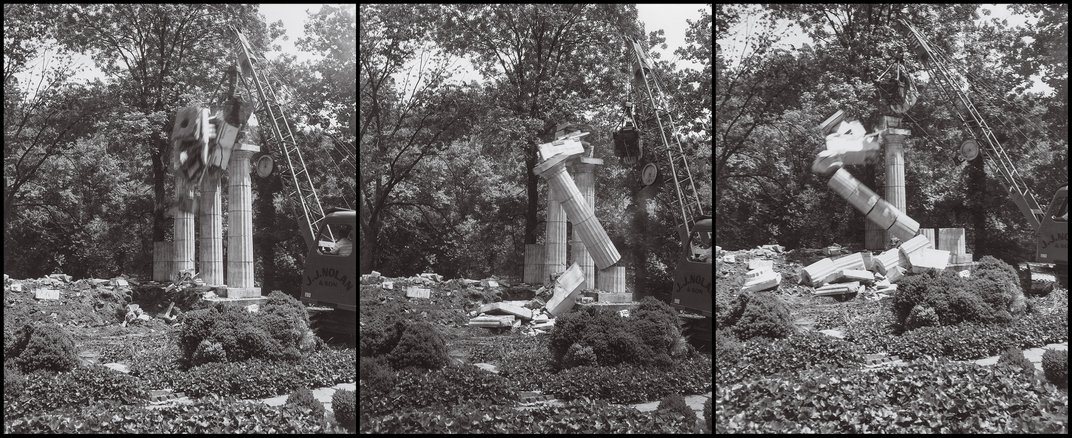
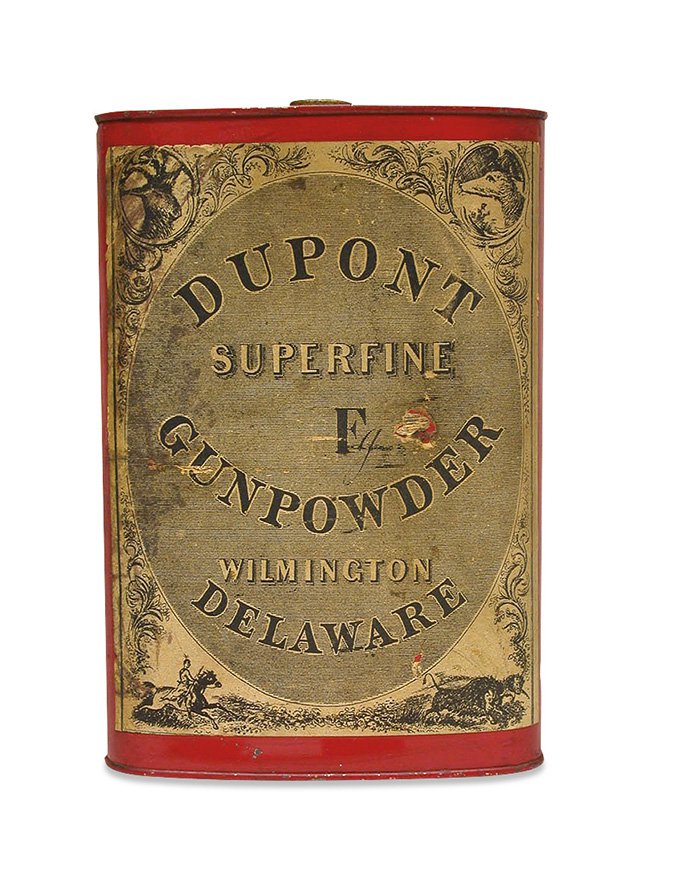
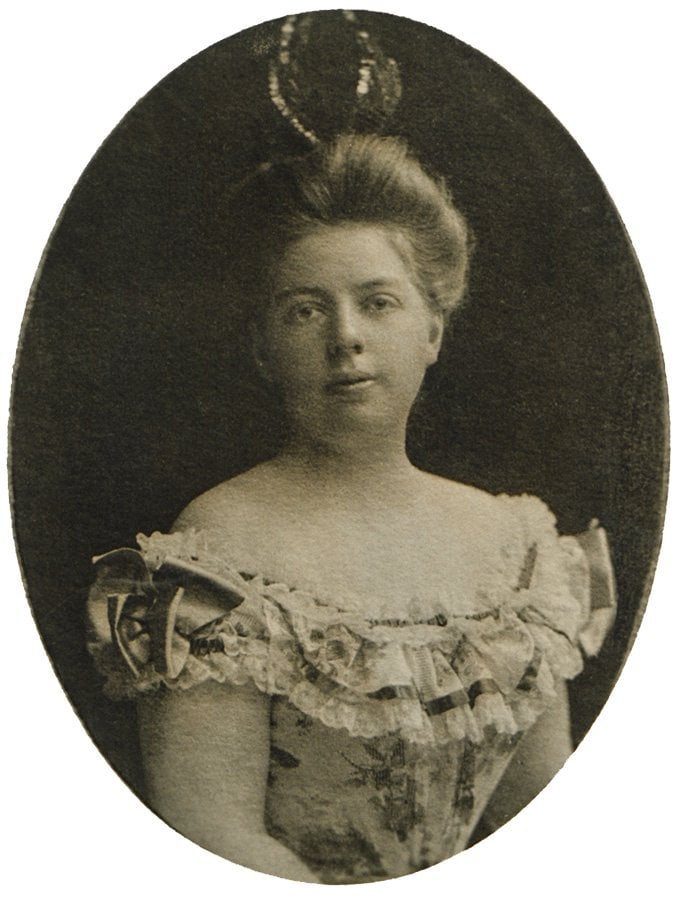
Louise Crowninshield, like her garden, is largely forgotten now, but in her day, “she was like a magnet; people flocked to her and loved her,” the Crowninshields’ niece Katharine Hammond once said. Louise was famous for her extraordinary kindness: In Boca Grande, Florida, where the Crowninshields spent their winters, she was called a “fairy godmother” after she helped build a community center, health clinic and school there. Louise also flouted conventions. “It was she who introduced us to the delights of skinny-dipping,” Louise’s niece Ruth Lord once wrote. She loved holding parties in her various homes and hosted so many overnight guests that, according to family lore, “the beds never cooled off.” The garden took more than a decade to create, beginning in 1928, and Louise would continue improving it throughout her life, maintaining this singular place of ruins atop ruins, like the successive layers of Troy. After she died in 1958, the garden fell into disrepair, though the neglect enhanced its fablelike qualities, as the newer ruins and the old powder mills became further battered by nature and time.
Orpello, the director of gardens and horticulture at the Hagley Museum and Library, a Smithsonian-affiliated museum that showcases U.S. industrial history and oversees the former mill property, arrived to work at Hagley in 2018. At that time, nobody even mentioned Louise’s lost garden, though he could see the tops of columns peeking through the jungle of weeds behind his office, like ancient buoys in an undulating green sea. In 2019, using controlled burning and a small crew, Orpello began tearing away the five feet of stinging nettles and strangling vines that had buried the landscape, revealing the entirety of its ruins.
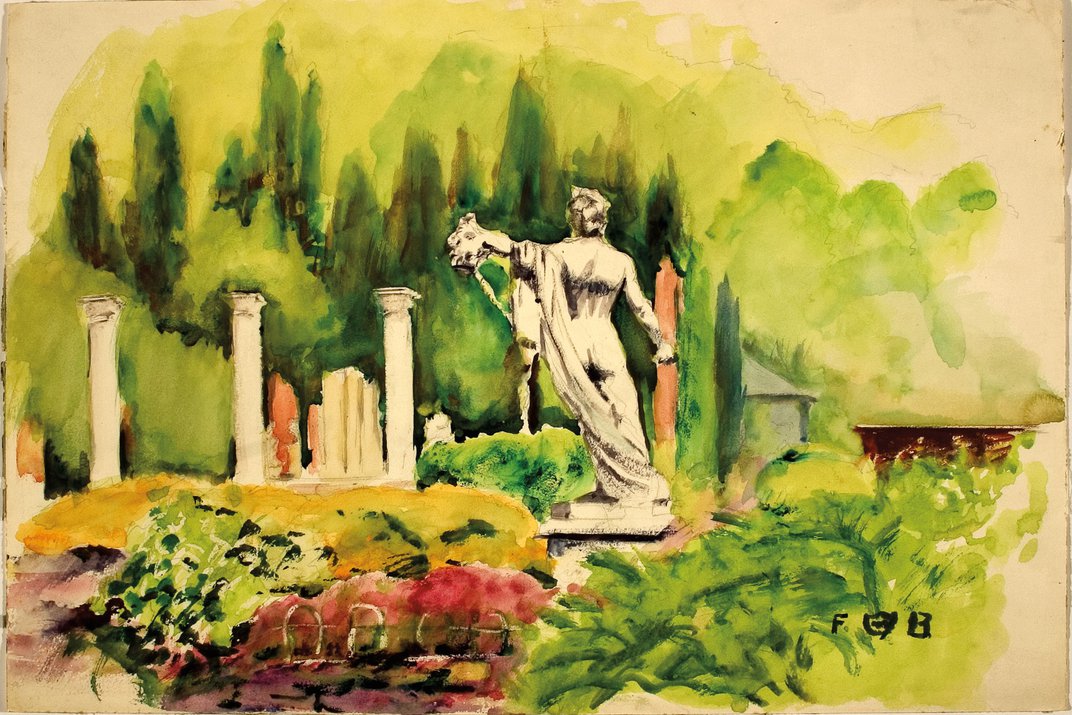
Abandoned gardens have enchanted people for generations. The Garden of Ninfa, in Italy, grows among the ruins of a medieval town where many residents were killed in 1382 during civil wars. The Lost Gardens of Heligan, in Cornwall, England, were abandoned after World War I, and restoration began in the 1990s. The Naval Cemetery Landscape, in Brooklyn, New York, was reinvented and opened in 2016 by Thomas Woltz and his firm, Nelson Byrd Woltz, as a native plant garden that honors its dead while celebrating life. Nelson Byrd Woltz, in turn, has been hired by the Hagley Museum to help develop a plan for restoring and potentially reopening the Crowninshield Garden to the public.
Landscapes can be complex works of art, with deeper meanings. Woltz tells me that for some people, “the prevailing conception of gardens is something of pleasure, maybe even frivolity, and a luxury of the rich. And instead, these gardens are reflections of the human condition.”
Alone in the garden during the Covid-19 pandemic lockdown, Orpello was staggered by what he saw. That March, hundreds of white leucojum flowers blossomed. In April, bluebells were waving across the hillside in a thousand shades of blue, pink, lavender and white. Louise had planted some of these flowers almost a century ago, and many hadn’t bloomed for decades. “Usually, I don’t cry for much, but here I cry often,” he says. “Botanically, it’s amazing. You’d expect to find some remnant narcissus or hyacinths—but to see the Mertensia, Erythronium, Tulipa clusiana? After being buried, without photosynthesis? Usually the rodent population goes bonkers, or everything rots. None of that happened.”
“I’ve never lost my belief that it is one of the most important and magical gardens in the world,” says landscape curator Philip G. Correll, who began a partial restoration effort in the late 1980s. Woltz is similarly enthusiastic: “When I got there and I saw that the ruin of a ruin was in absolute ruin, I realized there’s a kind of meta-complexity and philosophical challenge to this project that I feel like [our team’s] careers have been leading up to.”
There’s an irony in the fact that Louise became a founding trustee of the National Trust for Historic Preservation in 1949, and today its highest award is named after her—yet the future of her greatest creation is uncertain. “There are critical repairs that we desperately want to get done,” says Jill MacKenzie, executive director of the Hagley Museum. “It’s such a thing of beauty even in its disarray right now. … I can only imagine the beauty that we will be able to bring back.” The cost of securing the ruins and fully restoring the garden will be at least $26 million; the Hagley Museum has locked down some funding but still needs benefactors. Each winter, the freeze and thaw cycles destroy the ruins further, and without help, they may soon collapse beyond repair.
“I can’t tell you how much this place has changed me,” Orpello says. “I even love the weeds.” In a matter-of-fact voice, he adds, “This place makes me believe in fairy tales.”
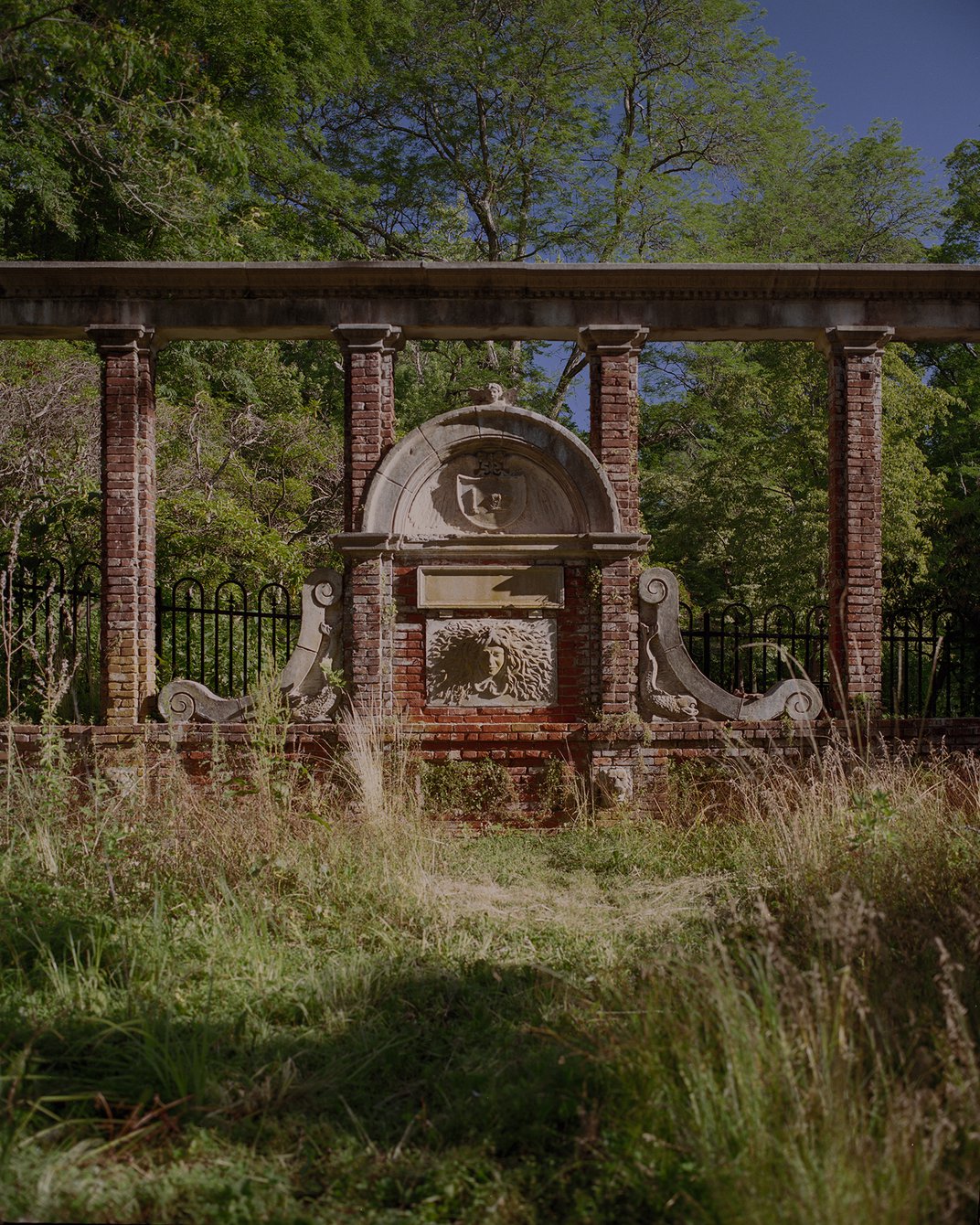
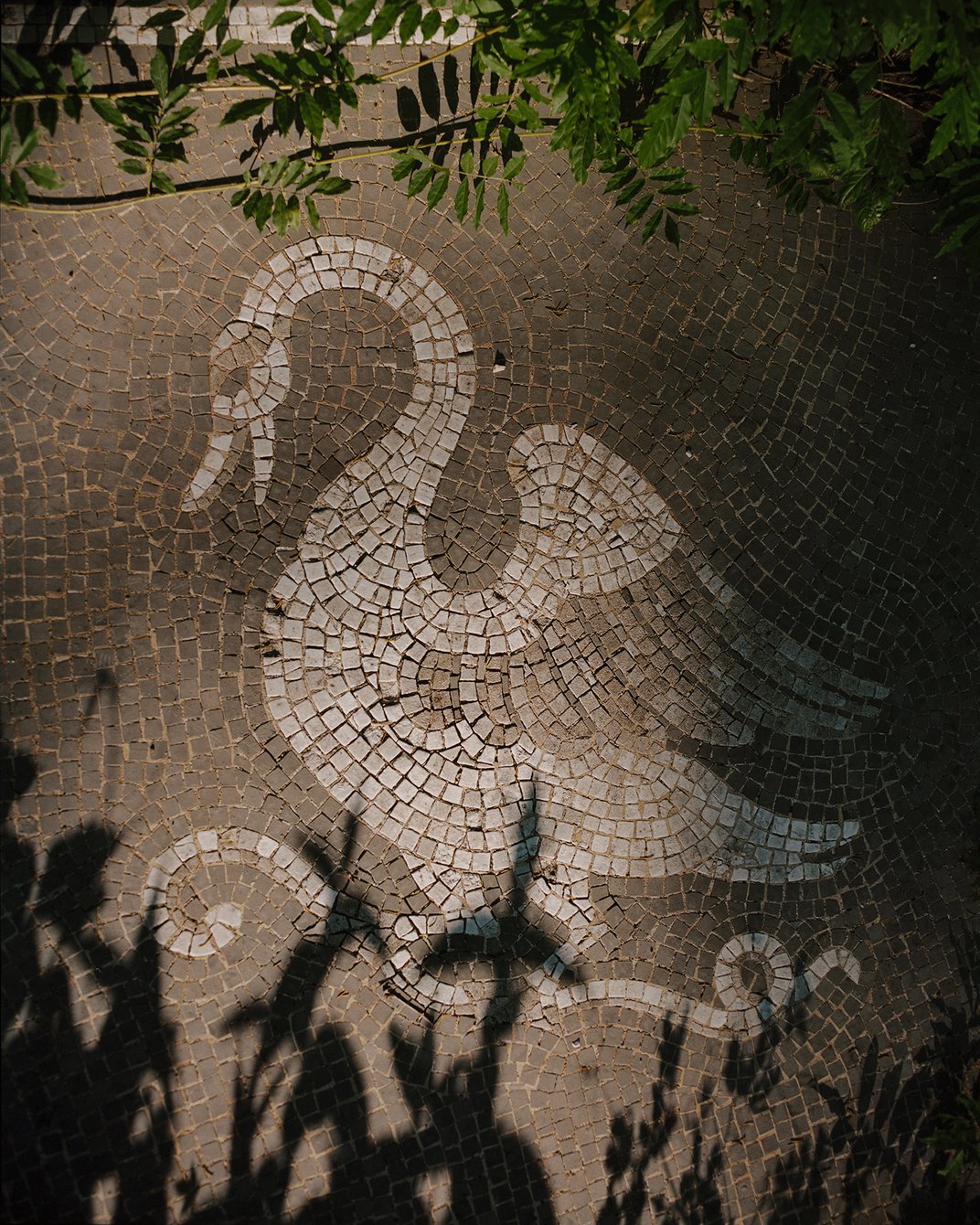
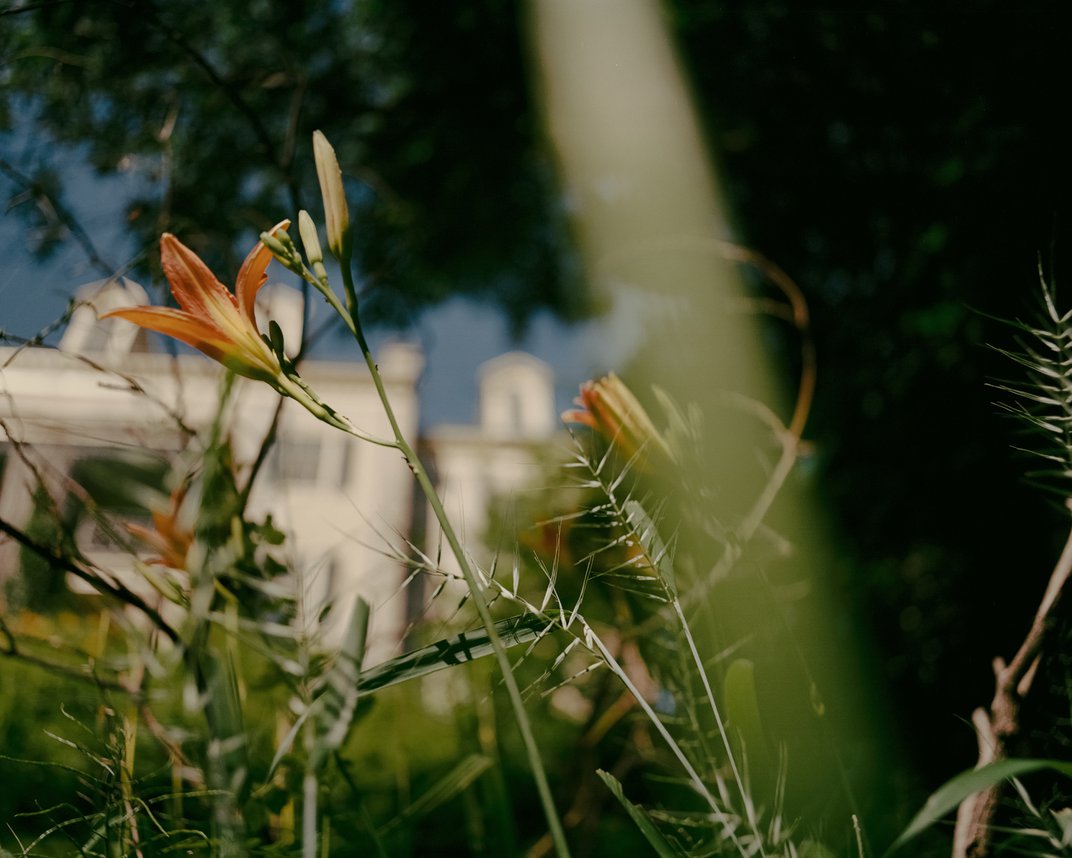
Charles Birnbaum, founder and president of The Cultural Landscape Foundation, a national education and advocacy nonprofit—he’s been called the “Johnny Appleseed” of neglected landscapes—says when he first saw the Crowninshield Garden, he was “gobsmacked.” He tells me, “This is not just a garden, but a historic site. The history is much bigger than just garden-making. Here, we are unlocking and making visible a story that is unknown.” Birnbaum also admires how the garden honors the tragedies that took place here. “The power of plants, because they are alive, because of their ephemerality—they’re witnesses to events and to people. They’re our connection to those cultural lifeways and those earlier times.” He believes the plans for reopening the garden have significance beyond this one spot in Delaware. “There are great lessons to be learned by the creative gesture that was here. Can a landscape be a work of art? Absolutely yes. The landscape serves as a text, and it’s up to us to read it.”
One text the Crowninshield Garden particularly recalls is the 1911 children’s novel The Secret Garden by Frances Hodgson Burnett, which has never been out of print. The novel tells the story of a young girl who discovers a garden that was abandoned for a decade after her aunt’s death, and who brings it back to life. “Every day and every night it seemed as if Magicians were passing through it drawing loveliness out of the earth … it was hard to go away and leave it all,” Burnett wrote.
Orpello was right: The garden is a fairy tale—an irreverent and dark tale that does not sugarcoat the place’s tragic past. One afternoon, I asked Orpello if I could walk through the garden alone. Suddenly by myself, I broke down, too. I’d never cried in a garden before. I’d fallen in love with other gardens, but those had been pretty and soothing; this place felt as if it were burning my skin off. I imagined a travel guide ranking places by how weepy they made you, though I wasn’t sure at first why I was crying. It was grief, but also much more than that. It seemed like a thousand feelings at once.
I asked Orpello, “Why does it make us break down like this?”
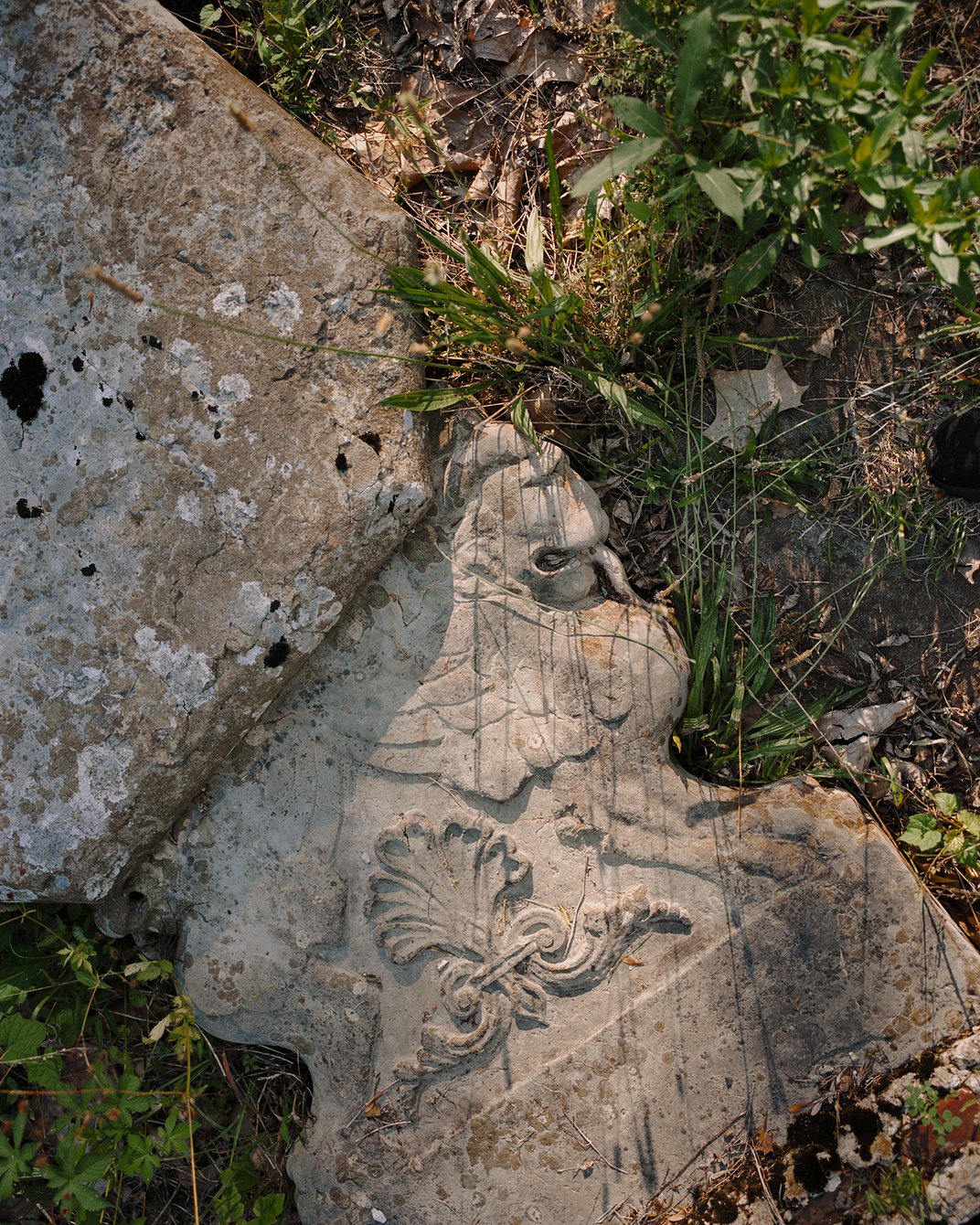
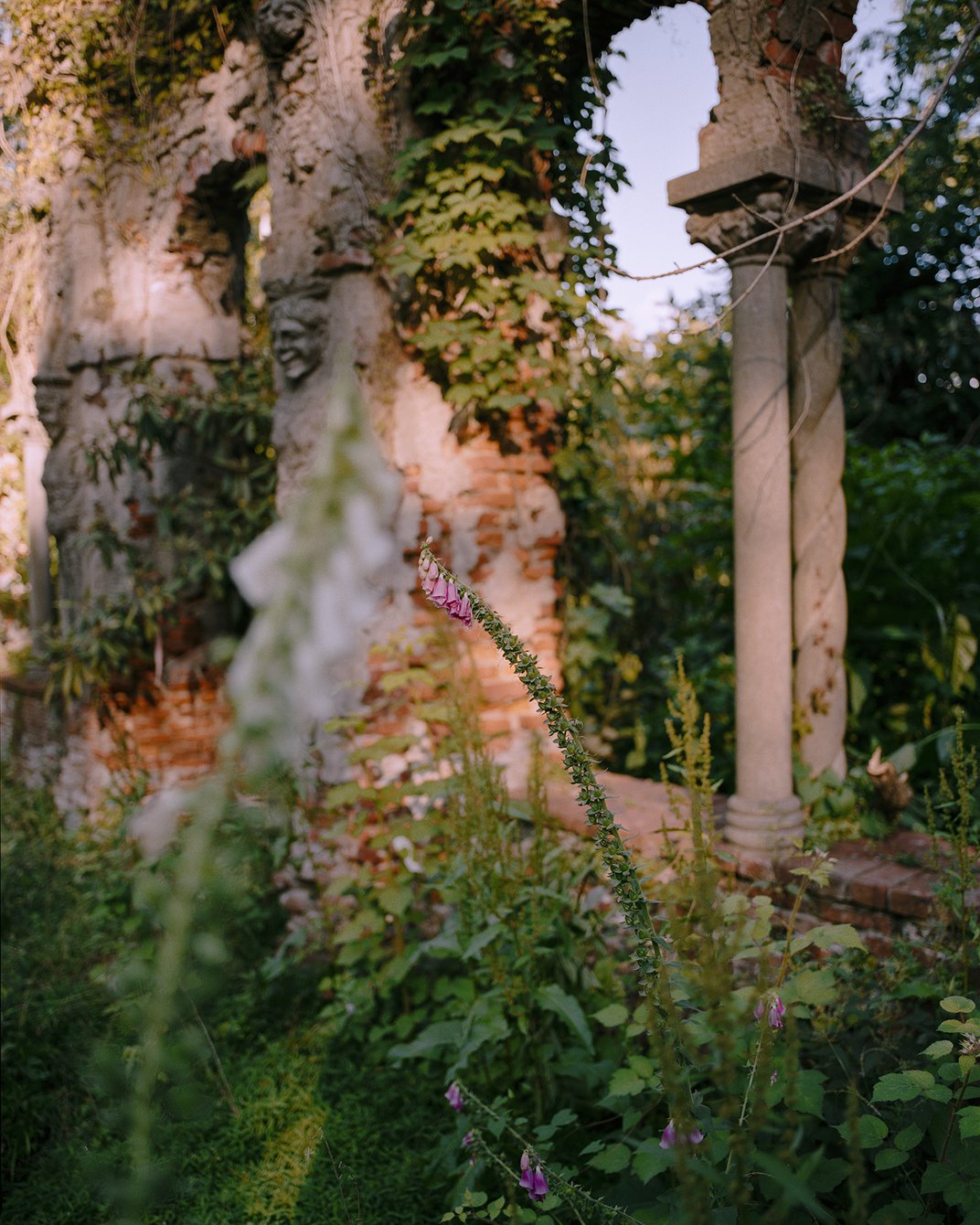
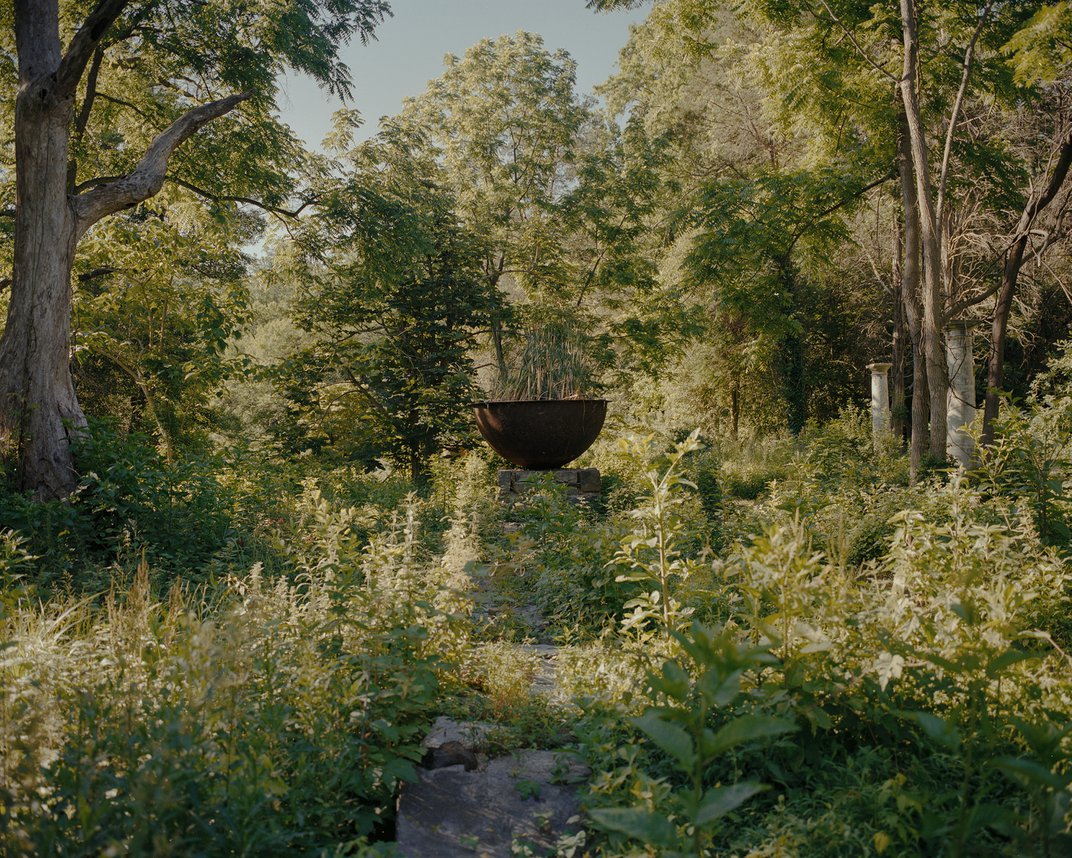
“It’s broken and whole. It cracks your shell. You can’t hold back here,” he said.
That afternoon in the garden, after I said goodbye to Orpello, I accidentally kneeled on a nettle plant; I tried to wash off the stingers, but that worsened the burning, as if I’d pushed the spikes deeper in. The garden had changed what I thought of as beautiful—it showed me that an abandoned, broken, weedy, dangerous mess could be the most beguiling and enchanted place I’d ever seen. And it changed what I believed about loss, that a place of tragedy needn’t be somber or grim, but could sing with life and roar like a cauldron lit on fire, like a wild party. It could renew your faith in the world.
My knee hurt. During the long drive home, it wouldn’t stop burning. The thousand-colored bluebells swayed in my mind every mile, waving their ephemeral and everlasting hello.

